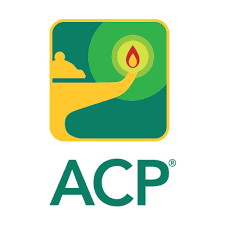Article
ACP, AAFP Release Guidelines for Management of Acute Pain
Author(s):
The recommendations can help clinicians provide proper treatment to adults suffering acute pain.

The American College of Physicians (ACP) and American Academy of Family Physicians (AAFP) developed a guideline of clinical recommendations on nonpharmacologic and pharmacologic management of acute pain from non-low back, musculoskeletal injuries in adults.
The organizations based the guideline on a systematic evidence review on the efficacy and safety of acute pain management in adults in the outpatient setting. Clinical outcomes were evaluated using the Grading of Recommendations Assessment, Development, and Evaluation system of pain, physical function, symptom relief, treatment satisfaction, and adverse events.
It was strongly recommended by ACP and AAFP for clinicians to treat acute pain patients with topical nonsteroidal anti-inflammatory drugs (NSAIDs) with or without menthol gel as the first-line therapy to reduce or relieve pain, physical function, and improve the patient’s treatment satisfaction. Topical NSAIDs were proven to be the only treatment that improved all outcomes in patients with acute pain. Not only was such treatment satisfying, there was pain reduction at less than 2 hours and at 1-7 days, improved physical function, and symptom relief.
Such treatment was not associated with a statistically significant increase in risk for adverse effects.
ACP and AAFP conditionally recommended treating acute pain with oral NSAIDs or specific acupressure to reduce pain and improve physical function. Clinicians can also use transcutaneous electrical nerve stimulation to reduce pain.
There was moderate-certainty evidence that oral NSAIDs reduced pain at less than 2 hours and at 1-7 days after treatment. The treatment was associated with a greater likelihood of symptom relief. Still, oral NSAIDs were associated with increased risk for gastrointestinal adverse events including gastrointestinal bleeding, abdominal or stomach pain, constipation, diarrhea, dyspepsia, nausea, and vomiting.
Specific acupressure improved physical function and pain within 1-7 days. However, there was only low-certainty evidence that transcutaneous electrical nerve stimulation improved pain at less than 2 hours and at 1-7 days.
Both organizations conditionally recommended against clinicians treating patients with acute pain with opioids, including tramadol.
The investigators noted high-certainty evidence of a small and not clinically important effect that treatment with acetaminophen plus opioids reduced pain at 1-7 days, improved symptom relief, and reduced pain at less than 2 hours. Study evidence demonstrated a substantial proportion of patients prescribed opioids for acute pain continued using prescription opioids over the long term (27% among high0risk populations and 6% among the general population).
The evidence used to form the guidelines came from selected studies published between the inception of several databases for randomized controlled trials and January 2, 2020. The studies assessed adults at least 18 years old with acute musculoskeletal pain in the outpatient setting. The team defined acute pain as lasting less than 4 weeks. Studies assessing the treatment of low back pain were excluded.
A meta-analysis analyzed pain relief, physical function, symptom relief, treatment satisfaction, and gastrointestinal, dermatologic, and neurologic adverse events. The analysis included 207 trials and 32, 959 patients with a median age of 34 years old. The median average pain score for patients at baseline was 6.49 cm on a 10 cm Visual Analog Scale (VAS).
Clinicians can use the recommendations to choose the optimal treatment path for patients with acute pain from non-low back, musculoskeletal injuries.
The guidelines, “Nonpharmacologic and Pharmacologic Management of Acute Pain From Non-Low Back, Musculoskeletal Injuries in Adults: A Clinical Guidelines From the American College of Physicians and American Academy of Family Physicians,” was published online in the journal Annals of Internal Medicine.





